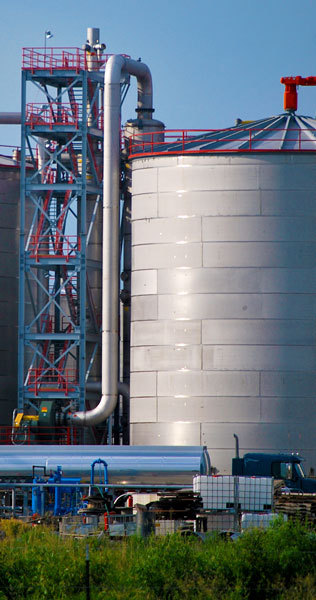Landfill Gas to Ethanol



PHOTO: STOCK PHOTO
February 15, 2021
BY Gary C. Young
A patented technology to convert landfill gas to ethanol has been garnering attention, most notably from the City of Cedar Rapids, Iowa. Plans are in the works to contract an independent engineering firm to conduct a technical, economic feasibility study for the technology at one of the city’s landfill sites.
The process was developed and patented by Bio-Thermal-Energy Inc. of Cedar Rapids, specifically to improve economics and reduce environmental impacts of landfills. Studies suggest the new process generates a net annual revenue, without a subsidy, and reduces carbon emissions from the landfill by more than 50%.
Advertisement
Advertisement
Landfill gas is generally composed of carbon dioxide and methane. If the feasibility study at the Cedar Rapids landfill demonstrates environmental benefits and profitability, the next step will be a pilot or commercial project.
The Process
In short, B-T-E’s process combines landfill gas and steam in a reformer. The syngas produced, composed of carbon monoxide and hydrogen, goes into a fermenter. The result is ethanol.
Landfill gas, typically 50% methane and 50% carbon dioxide with some impurities, is cleaned up before entering the catalytic reformer with steam for conversion to syngas. After syngas cleanup, the syngas is fermented to ethanol using an existing commercial process similar to corn ethanol fermentation. A carbon balance about the entire process from landfill gas to ethanol indicates that about 56.9% of the carbon is contained in the finished product—ethanol. That’s 56.9% of the carbon from the landfill gas not emitted to the atmosphere.
In addition, leachate from the landfill can create additional landfill gas for production of more ethanol. Leachate is the liquid that exists in landfills, formed when rainwater infiltrates and percolates through the degrading waste. Recycling the leachate reduces the need to truck it to a waste treatment plant for processing and final disposal of solids to a landfill.
Advertisement
Advertisement
The landfill gas-to-ethanol process also provides funds for maintaining the landfill as required by regulatory agencies even after closing of the landfill operations. Landfill gas is produced, typically, for more than 20 years after a landfill is closed.
Economic Analysis
The economics of the landfill gas-to-ethanol process was estimated for a system with landfill gas produced at a rate of 1,200 standard cubic feet per minute, and considered as waste with no cost. The total production cost for the plant was $0.946 per gallon for the ethanol, with an estimated production of 20.37 million gallons per year and totally installed cost (TIC) of $144 million. Electrical cost is estimated at $0.05 per kilowatt hour (kwh). TIC includes inside battery limits (IBL) and outside battery limits (OBL), with OSBL at 50% of ISBL, which is typical of a greenfield plant. In the economic analysis, total capital expenditures include ISBL and OSBL, capital at 6% and 20 years. Operating expense includes labor and maintenance. In addition to the production of 20.37 million gallons of ethanol per year, the plant would produce 3.4 megawatts of power for net export to the local grid.
From a preliminary economic analysis, a net revenue (revenue minus cost of production) of $11.65 million per year is estimated, with ethanol selling at $1.5175 per gallon and no subsidy considered. With a subsidy of $0.815 per gallon, per the Chicago Board of Trade for D5 renewable identification numbers (RINs), net revenue jumps to $28.25 million per year.
B-T-E’s landfill gas-to-ethanol conversion technology has several patents, both U.S. and foreign. The technology has also been proven in a proprietary pilot application.
Author: Gary C. Young
President, Bio-Thermal-Energy Inc.
319.373.5191
gycoinc@aol.com
Related Stories
Broco Energy on July 17 announced a new partnership with the Massachusetts Port Authority (Massport) to deliver and transition Massport's fuel tanks to renewable diesel across its various facilities.
Shell Aviation, Accenture, and Amex GBT on July 10 announced Avelia is in the process of evolving to an industry solution with independent data hosting and a multi-supplier model helping users access the GHG benefits of SAF.
The U.S EPA on July 17 released data showing more than 1.9 billion RINs were generated under the RFS during June, down 11% when compared to the same month of last year. Total RIN generation for the first half of 2025 reached 11.17 billion.
The U.S. EPA on July 17 published updated small refinery exemption (SRE) data, reporting that six new SRE petitions have been filed under the RFS during the past month. A total of 195 SRE petitions are now pending.
European biodiesel producer Greenergy on July 10 confirmed plans to shut down its biodiesel plant in Immingham, Lincolnshire, U.K. The company temporarily suspended operations at the facility earlier this year.
Upcoming Events










